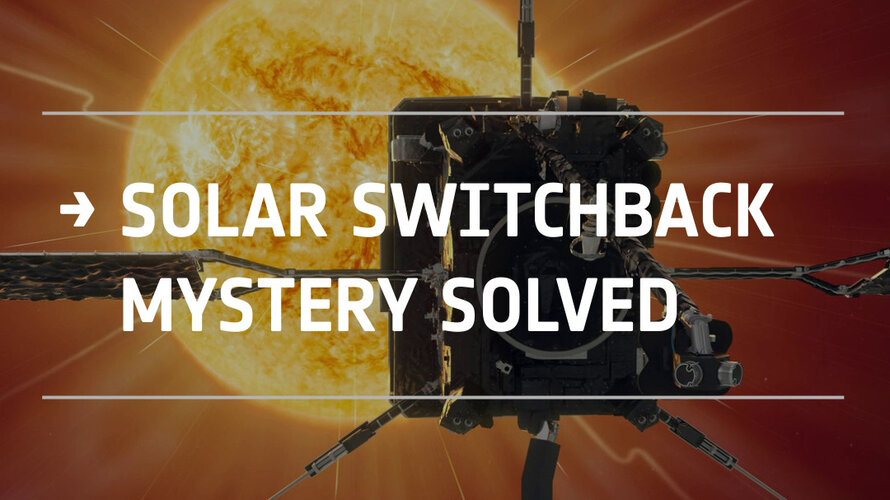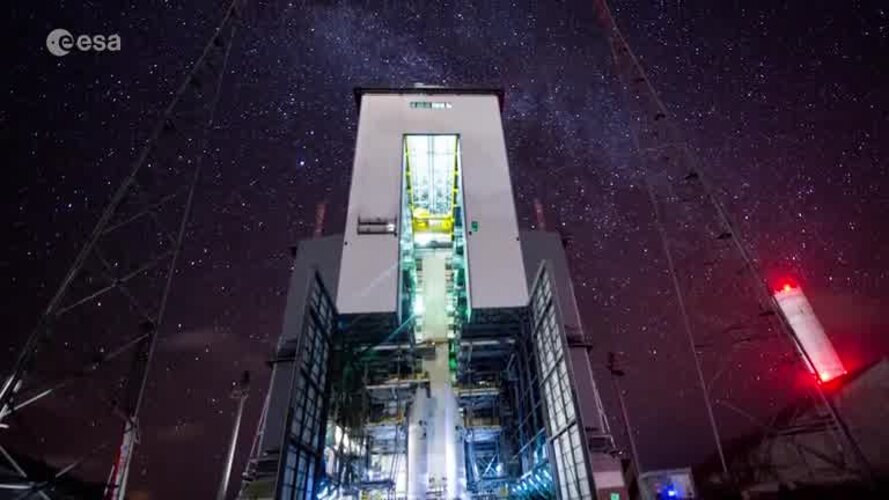
Copernical Team
Thales Alenia Space Partners With Kythera Space Solutions for Advanced Space Inspire Mission Segment Software
 Kythera Space Solutions (Kythera), the leading provider of dynamic management systems for next-generation payloads and SATCOM networks, has entered into a 10-year partnership with Thales Alenia Space, a Joint Venture between Thales (67 %) and Leonardo (33 %), to develop the Ground Mission Segment System (GMSS) for Thales Alenia Space's software-defined satellite (SDS) product line, Space Inspire
Kythera Space Solutions (Kythera), the leading provider of dynamic management systems for next-generation payloads and SATCOM networks, has entered into a 10-year partnership with Thales Alenia Space, a Joint Venture between Thales (67 %) and Leonardo (33 %), to develop the Ground Mission Segment System (GMSS) for Thales Alenia Space's software-defined satellite (SDS) product line, Space Inspire PCX Aerosystems Announces Acquisition of NuSpace
 PCX Aerosystems ("PCX"), a market-leading producer of advanced mechanical systems for the aerospace industry, announced the September 2, 2022 acquisition of NuSpace, Inc. ("NuSpace") from Cornerstone Capital Holdings and members of the NuSpace leadership team. With engineering and manufacturing roots going back to 1907, NuSpace has evolved from a diversified mechanical systems manufacturer into
PCX Aerosystems ("PCX"), a market-leading producer of advanced mechanical systems for the aerospace industry, announced the September 2, 2022 acquisition of NuSpace, Inc. ("NuSpace") from Cornerstone Capital Holdings and members of the NuSpace leadership team. With engineering and manufacturing roots going back to 1907, NuSpace has evolved from a diversified mechanical systems manufacturer into Solar switchback mystery solved
 Video:
00:00:58
Video:
00:00:58
ESA’s Solar Orbiter has solved the mystery of a magnetic phenomenon in the solar wind. It has taken the first ever image of a ‘switchback’ in the solar corona, confirming its predicted ‘S’ shape. A switchback is defined by rapid flips in magnetic field direction. The observed switchback is linked to an active region associated with sunspots and magnetic activity where there is an interaction between open and closed magnetic field lines. The interaction releases energy and sends the S-shaped disturbance into space. The new data suggest that switchbacks could originate near the solar surface, and may
Alex on the rocks
 Image:
Image:
ESA astronaut Alexander Gerst and NASA astronaut Stephanie Wilson are getting world-class geology training this week during the fifth edition of ESA’s Pangaea course.
A balanced mix of theory and field trips, the course will take the pair all over Europe to hone their geology skills. The training began last week in the Italian Dolomites with lessons on fundamental geology knowledge and skills, martian geology and asteroids at Bletterbach Canyon.
The rock samples from the canyon Alexander is holding in this image are a combination of gypsum (white hue) in siltstone-sandstone (reddish hue), and are analogous to rocks found on Mars.
Ariane 6: Launchpad testing
 Video:
00:03:57
Video:
00:03:57
It has been an exciting and busy summer for the European Space Agency, with development and testing of its new Ariane 6 launcher. At Europe’s spaceport in, French Guiana, a test model of the launcher’s central core was assembled for the first time. Ariane 6 is the first Ariane rocket to be assembled horizontally, which is simpler and less costly than more traditional vertical assembly. Then, the rocket was moved to its launchpad and placed upright in the massive mobile gantry for combined tests, to validate the compatibility between all components of the complete launch system. Soon
Solar Orbiter solves magnetic switchback mystery

With data from its closest pass of the Sun yet, the ESA/NASA Solar Orbiter spacecraft has found compelling clues as to the origin of magnetic switchbacks, and points towards how their physical formation mechanism might help accelerate the solar wind.
Circalunar clocks: Using the right light
 How animals are able to interpret natural light sources to adjust their physiology and behaviour is poorly understood. The labs of Kristin Tessmar-Raible (Max Perutz Labs Vienna, Alfred Wegener Institut, University of Oldenburg) and Eva Wolf (Johannes Gutenberg University and Institute of Molecular Biology Mainz) have now revealed that a molecule called L-cryptochrome (L-Cry) has the biochemical
How animals are able to interpret natural light sources to adjust their physiology and behaviour is poorly understood. The labs of Kristin Tessmar-Raible (Max Perutz Labs Vienna, Alfred Wegener Institut, University of Oldenburg) and Eva Wolf (Johannes Gutenberg University and Institute of Molecular Biology Mainz) have now revealed that a molecule called L-cryptochrome (L-Cry) has the biochemical Chinese Gaofen satellites deployed for quake-hit Sichuan
 China has applied its Gaofen series satellites to help with relief work following a 6.8-magnitude earthquake in southwest China's Sichuan Province, according to the website of state broadcaster China Central Television (CCTV).
More than 10 satellites were deployed to capture images of the quake-hit areas 10 minutes after the earthquake jolted Sichuan's Luding County at 12:52 p.m. Monday, i
China has applied its Gaofen series satellites to help with relief work following a 6.8-magnitude earthquake in southwest China's Sichuan Province, according to the website of state broadcaster China Central Television (CCTV).
More than 10 satellites were deployed to capture images of the quake-hit areas 10 minutes after the earthquake jolted Sichuan's Luding County at 12:52 p.m. Monday, i Could more of Earth's surface host life?
 Of all known planets, Earth is as friendly to life as any planet could possibly be - or is it? If Jupiter's orbit changes, a new study shows Earth could be more hospitable than it is today.
When a planet has a perfectly circular orbit around its star, the distance between the star and the planet never changes. Most planets, however, have "eccentric" orbits around their stars, meaning the o
Of all known planets, Earth is as friendly to life as any planet could possibly be - or is it? If Jupiter's orbit changes, a new study shows Earth could be more hospitable than it is today.
When a planet has a perfectly circular orbit around its star, the distance between the star and the planet never changes. Most planets, however, have "eccentric" orbits around their stars, meaning the o Foundation model improves accuracy for remote sensing image interpretation
 A new foundation model dubbed RingMo has been developed to improve accuracy for remote sensing image interpretation, according to the Aerospace Information Research Institute (AIR), Chinese Academy of Sciences (CAS).
Remote sensing images has been successfully applied in many fields, such as classification and change detection, and deep learning approaches have contributed to the rapid dev
A new foundation model dubbed RingMo has been developed to improve accuracy for remote sensing image interpretation, according to the Aerospace Information Research Institute (AIR), Chinese Academy of Sciences (CAS).
Remote sensing images has been successfully applied in many fields, such as classification and change detection, and deep learning approaches have contributed to the rapid dev 
